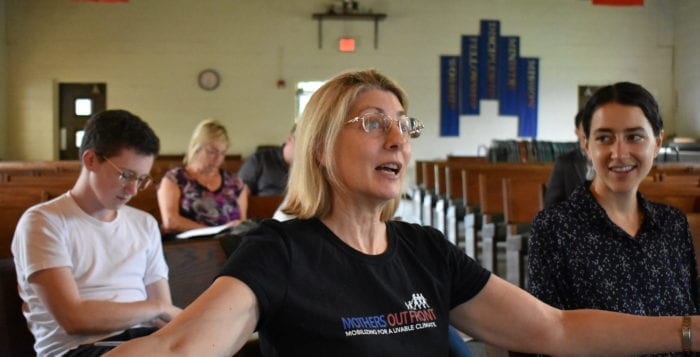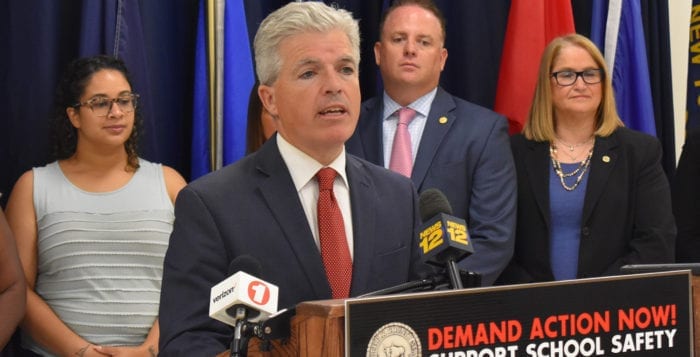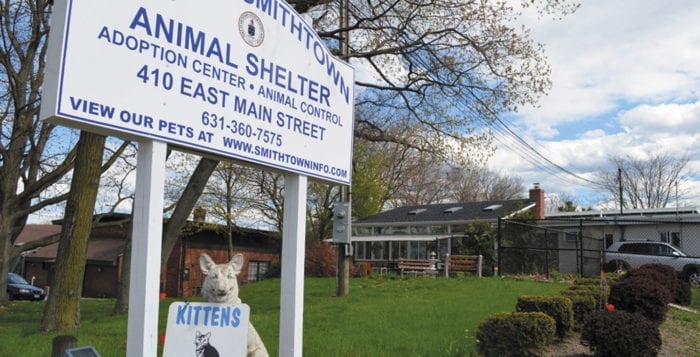By Barbara Beltrami
When June finally busts out all over, local strawberries will be at their peak. Despite their slow start because of the rain, they will be their usual juicy ruby red selves ready to be picked or purchased at local farms or those out east. There will be plenty for dropping into baskets and just as many for popping into our mouths as we move between the rows. When fresh strawberries are so naturally delicious without any adornment except maybe a little sugar and cream, anything further seems like sacrilege.
On the other hand, when they’re that good, any recipe that features them is always that much better because those little gems themselves are so good. So when you get home from your strawberry picking with your baskets of ruby treasures, consider an old-fashioned strawberry shortcake, a strawberry-arugula-radish salad with balsamic dressing or a strawberry sorbet.
Aunt Edith’s Strawberry Shortcake

YIELD: Makes 10 servings
INGREDIENTS:
1 quart fresh strawberries, washed and crushed
¼ cup sugar
2½ cups flour
1/3 cup sugar
1 tablespoon baking powder
¼ teaspoon salt
1/3 cup cold butter, cut into small pieces
1 cup milk
1 egg yolk, slightly beaten
2 tablespoons sugar
1 cup heavy whipping cream
1 tablespoon sugar
1 teaspoon vanilla extract
DIRECTIONS:
Heat oven to 400 F. In a large bowl combine the berries with the quarter cup sugar and set aside. In a medium bowl combine the flour, one-third cup of sugar, baking powder and salt. Using a pastry blender or two knives, cut the butter into the flour mixture until it resembles coarse crumbs; stir in milk. Knead until dough forms, then, on a lightly floured surfaced, pat into a half-inch thickness.
Using a 2½-inch cutter or the same-size upside-down glass, cut into 10 circles and place on ungreased cookie sheet. Brush egg yolks over tops, then sprinkle with two tablespoons sugar. Bake 10 to 15 minutes, until golden brown on top. Remove from oven and let cool 10 to 15 minutes. Meanwhile, whip cream with remaining tablespoon sugar and vanilla. Split shortcakes in half horizontally, place on plates, then spoon whipped cream and strawberries in any order you wish and replace tops. Serve immediately with hot or iced coffee or tea.
Strawberry-Arugula-Radish Salad with Balsamic Dressing
YIELD: Makes 8 servings
INGREDIENTS:
10 ounces fresh arugula, washed and dried
1 quart fresh strawberries, washed, hulled and sliced
8 radishes, washed, trimmed and very thinly sliced
½ cup olive oil
3 tablespoons balsamic vinegar
1 teaspoon raspberry vinegar
1 tablespoon orange juice
1 teaspoon Dijon mustard
1 teaspoon honey
1 whole garlic clove, peeled
Salt and freshly ground pepper, to taste
DIRECTIONS:
Have all ingredients at room temperature. Place arugula, strawberries and radishes in a large bowl. Combine remaining ingredients in a small bowl and let sit for one hour. Remove and discard garlic. With a fork or small wire whisk, emulsify the oil, vinegars, juice, mustard, honey, salt and pepper. Pour over greens and toss thoroughly. Serve immediately as a first course or with meat, poultry or fish.
Strawberry Sorbet

YIELD: Makes 1 quart
INGREDIENTS:
2 quarts strawberries, washed and hulled
1 cup sugar
1 ounce freshly squeezed lemon juice
½ ounce vodka
Pinch coarse salt
DIRECTIONS:
Place all ingredients in a food processor and puree until there are no lumps left. Transfer to another container, cover and refrigerate 6 hours. Place in an ice cream maker and churn according to manufacturer’s directions until mixture resembles soft ice cream. Transfer one more time to airtight container and freeze at least 4 hours. Serve with crisp cookies, biscotti or pound cake.


















